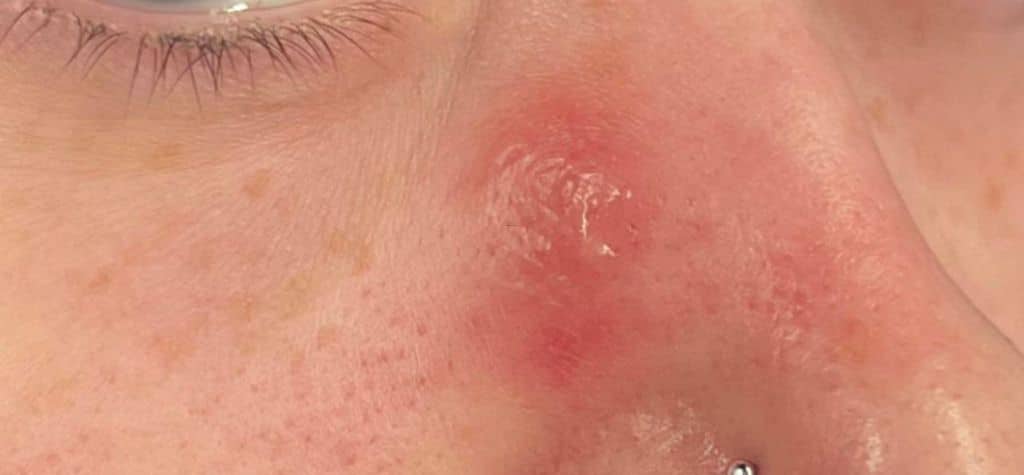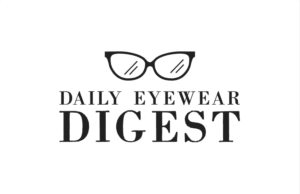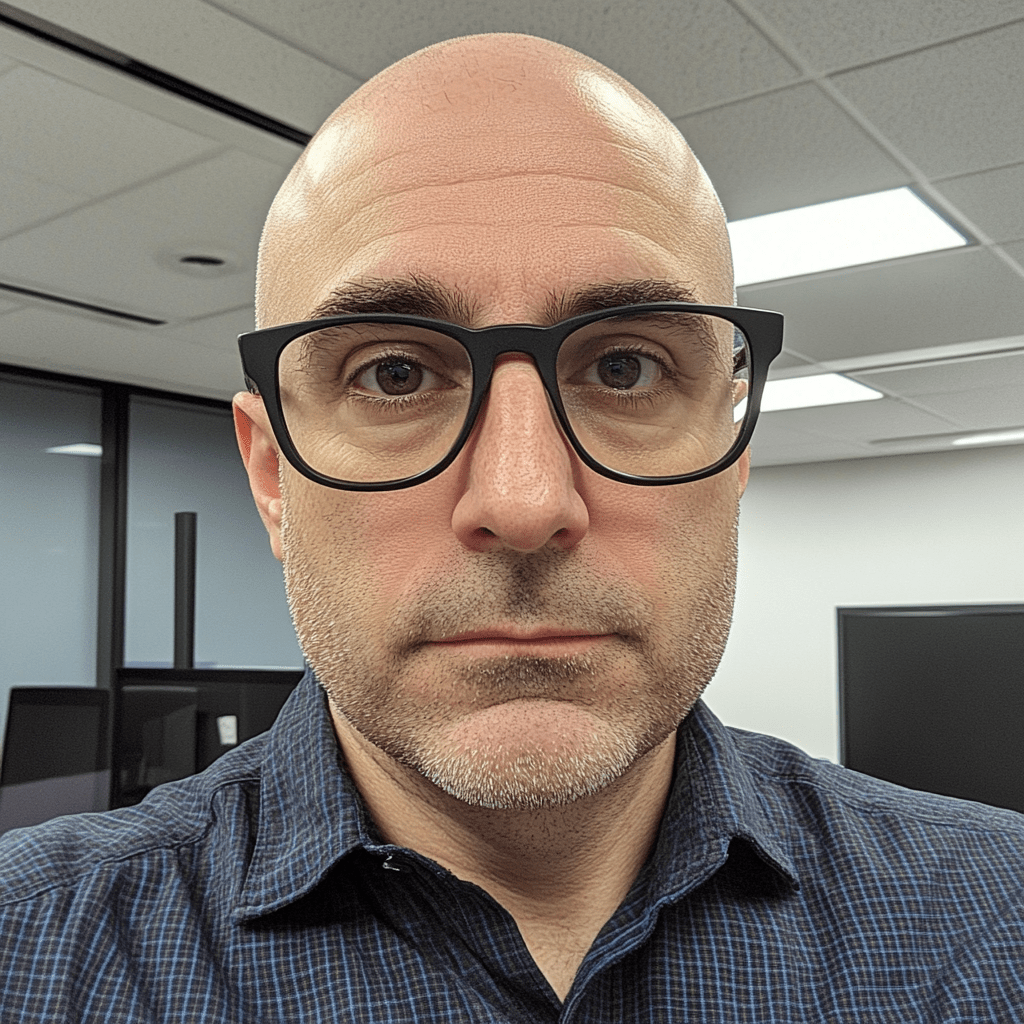Understanding the Anatomy of Nose Marks from Glasses
Despite advances in eyewear design, many people still suffer from those annoying red dents on the sides of their nose after wearing glasses. These marks are not just unsightly—they can also be painful and leave lasting discoloration.
What Causes Nose Dents and Redness?
The marks result from prolonged pressure applied by the nose pads or the bridge of the glasses. Over time, this pressure reduces blood flow and irritates the skin, leading to redness, swelling, and sometimes even bruising.
The Pressure Points: Nose Pads and Frame Fit
Nose pads are designed to help glasses sit comfortably, but when they’re poorly adjusted or the frame is too heavy, they become pressure traps. The bridge shape and material of your frame play a critical role in whether or not these marks appear.
Why It’s Still a Problem in 2025

Advances in Eyewear Design—But Still Imperfect
While 2025 glasses are sleeker and lighter than ever, many frames still fail to address individual nose shapes and skin sensitivities. Universal designs can’t accommodate everyone’s needs, especially for long-term wearers.
Materials Matter: Weight, Fit, and Skin Sensitivity
Some materials like stainless steel or heavy acetate apply more pressure on the nose. Others, though light, might cause allergic reactions or friction-induced irritation, especially in hot climates.
Common Types of Nose Marks from Glasses
Red Imprints and Indentation Marks
These are temporary but can look unpleasant. They’re most common after wearing glasses for several hours.
Dark Spots and Hyperpigmentation
Frequent irritation can cause melanin production, resulting in darkened skin where your glasses sit.
Skin Irritation and Rashes
People with sensitive skin or allergies may experience rashes, bumps, or even peeling caused by prolonged friction or certain materials.
The Role of Frame Material and Weight
Metal vs Acetate Frames
Metal frames often include adjustable nose pads, which are great for fitting but may dig into the skin. Acetate frames usually don’t have pads, which can spread pressure more evenly but still leave marks if heavy.
Lightweight Options: Titanium and TR90
Frames made of titanium or TR90 plastic are feather-light and hypoallergenic. These are ideal for minimizing pressure and preventing skin irritation.
Fit and Frame Shape: The Hidden Culprit

Bridge Width and Nose Pad Placement
A bridge that’s too narrow will sit too high and dig in. A wide bridge may slide down, forcing constant adjustments that create friction.
Improper Sizing Issues
Wearing glasses not tailored to your face shape is like wearing the wrong shoe size—it’s uncomfortable and causes unnecessary pressure points.
Lifestyle Factors That Make Nose Marks Worse
Long Hours of Wear
If you’re wearing glasses from sun-up to sun-down without breaks, your skin never gets a chance to recover.
Sweat and Humidity Effects
Sweat can cause glasses to slip, leading to more rubbing and friction-induced damage. It also increases the risk of bacterial buildup.
9 Proven Ways to Prevent Nose Marks in 2025
1. Use Silicone Nose Pads or Cushions
Soft, gel-based silicone pads help distribute pressure more evenly. Many come in stick-on formats that fit any frame.
2. Choose Ultra-Light Frames
The lighter the glasses, the less pressure they put on your nose. Prioritize titanium, TR90, or carbon fiber frames.
3. Adjust the Nose Pad Angles
A professional optician can custom bend your nose pads to fit the unique slope of your nose, reducing pressure points.
4. Get a Custom Fit at the Optician
Personal fittings ensure your frames rest evenly across your face, taking weight off your nose.
5. Apply Moisturizer Before Wearing Glasses
Hydrated skin is more resilient. A light layer of non-comedogenic moisturizer can act as a buffer between skin and frame.
6. Switch to Nose-Pad-Free Designs
Many acetate or plastic frames rest on the nose bridge without pads. These styles often leave fewer marks.
7. Take Scheduled Breaks
Removing your glasses for 5–10 minutes every few hours allows your skin to breathe and recover.
8. Try Nose Guard Strips
Inspired by sports strips, these thin barriers absorb pressure and moisture, reducing friction.
9. Use Skin-Friendly Frame Materials
Hypoallergenic materials like silicone and memory plastic prevent allergic reactions and skin breakdown.
How to Treat Nose Marks and Discoloration

Topical Creams and Cooling Gels
Look for products with aloe vera, niacinamide, or hyaluronic acid. They reduce inflammation and promote healing.
Natural Remedies for Hyperpigmentation
Apply diluted apple cider vinegar, turmeric paste, or cold green tea compresses to lighten dark marks over time.
When to Replace or Adjust Your Glasses
Warning Signs of Poor Fit
- Persistent red marks
- Dents that last hours
- Constant sliding or readjusting
These indicate it’s time for a professional fit check or new frames.
How Often to Reassess Your Eyewear Fit
Check your frame fit every 6-12 months or any time your comfort noticeably decreases.
Future Innovations in Glasses Comfort
Memory Foam Nose Pads
Emerging designs use memory foam that adapts to your face over time, offering a personalized cushion-like feel.
Pressure-Sensing Smart Glasses
Some smart glasses in development alert users when pressure exceeds healthy limits, prompting you to adjust them or take a break.
Frequently Asked Questions
Q1: Why do nose marks from glasses take so long to fade?
A: Repeated pressure causes capillary damage and skin discoloration, which takes time to heal.
Q2: Can glasses permanently change the shape of my nose?
A: With long-term, poor-fitting glasses, yes. They can create permanent indentations or bone shifts in rare cases.
Q3: Are there glasses that don’t leave any nose marks?
A: No frame is 100% mark-free, but ultra-light, well-fitted glasses minimize the problem significantly.
Q4: How can I prevent nose marks if I have oily skin?
A: Use anti-slip nose pads, keep your glasses clean, and apply a mattifying moisturizer before wearing them.
Q5: Is surgery or filler recommended for deep nose dents?
A: Cosmetic fillers may help in extreme cases, but always consult a dermatologist or cosmetic surgeon first.
Q6: Can contact lenses help with this problem?
A: Yes, contacts eliminate pressure entirely. However, not everyone finds them comfortable or suitable for full-time wear.
Conclusion: Comfort and Style Should Go Hand-in-Hand
In 2025, we have the technology and design options to make wearing glasses more comfortable than ever. Yet, nose marks persist due to improper fit, weighty frames, and skin sensitivity. The good news? These marks can be prevented—and treated—with a few smart choices and adjustments.
Whether you go for ultra-light materials, cushioning pads, or simply take more breaks during the day, your nose deserves better. Don’t sacrifice comfort for style—you can have both with the right eyewear strategy.

